Discover the significance of the NIH Stroke Scale Group A Patient 5 in neurological assessment. Learn how it aids clinicians in making crucial treatment decisions for stroke patients.
In the realm of healthcare, precision and efficiency are paramount, particularly in the urgent care of stroke patients. Amidst the intricate web of assessments and interventions, the NIH Stroke Scale Group A patient 5 emerges as a pivotal tool, guiding clinicians through the intricate landscape of neurological evaluation. Its significance lies not only in its diagnostic prowess but also in its ability to swiftly inform treatment decisions, potentially altering the trajectory of patient outcomes. In this article, we delve into the intricacies of the NIH Stroke Scale Group A patient 5, dissecting its components, exploring its clinical relevance, and illuminating its role in the intricate dance between medical assessment and intervention.
Top 10 Points about NIH Stroke Scale Group A Patient 5 :
- The Importance of the NIH Stroke Scale
- Understanding Group A Patient 5 in Neurological Assessment
- Components and Scoring of the NIH Stroke Scale
- Significance of Group A Patient 5 in Stroke Evaluation
- Interpreting Results for Clinical Decision-Making
- NIH Stroke Scale as a Predictor of Stroke Severity
- Group A Patient 5: A Key Indicator in Neurological Status
- Application of NIH Stroke Scale in Treatment Planning
- Training and Certification for Administering the Scale
- Limitations and Considerations in Using the NIH Stroke Scale
Several facts about NIH Stroke Scale Group A Patient 5
Stroke, a devastating neurological event, requires swift and accurate assessment to guide treatment decisions and improve patient outcomes. One crucial tool in this process is the NIH Stroke Scale Group A Patient 5. Let's delve into its significance and application in neurological assessment.
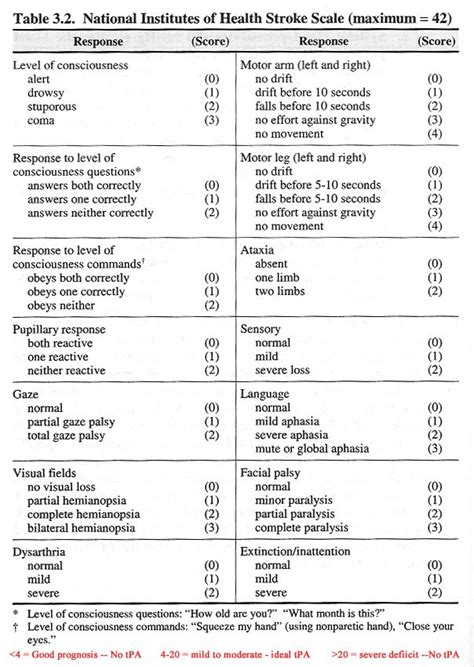
The NIH Stroke Scale serves as a standardized tool for evaluating the severity of a stroke and determining appropriate treatment strategies. Within this scale, Group A Patient 5 holds particular significance, as it assesses the patient's level of consciousness, orientation, and language function.
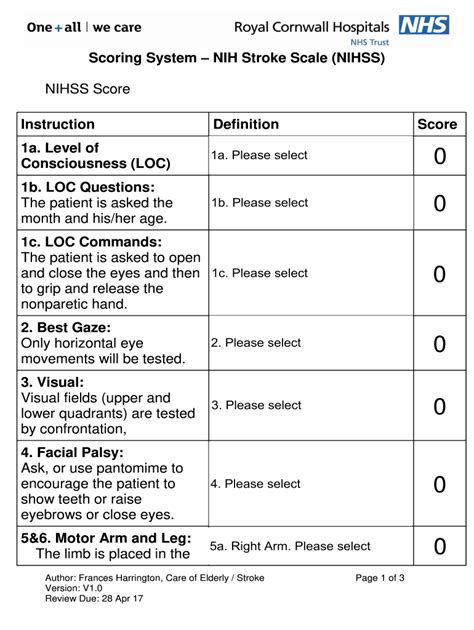
Group A Patient 5 within the NIH Stroke Scale evaluates the patient's ability to understand and execute simple commands, providing crucial insights into their cognitive and motor functions. This assessment aids in determining the severity of the stroke and guiding subsequent treatment decisions.
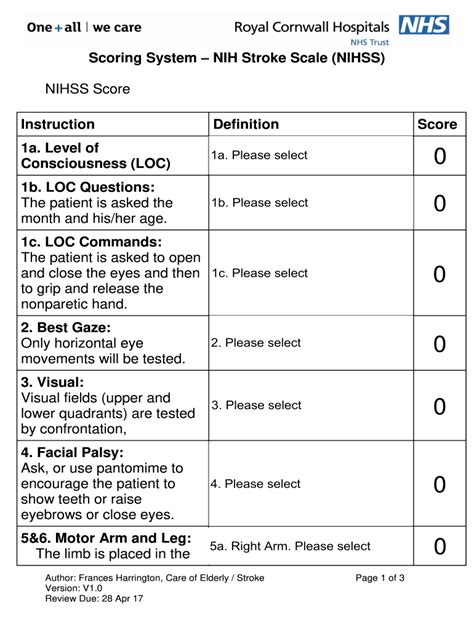
The NIH Stroke Scale consists of various components, each assessing different aspects of neurological function. Group A Patient 5 specifically evaluates the patient's ability to follow commands, with a scoring system ranging from 0 to 3, reflecting varying degrees of impairment.
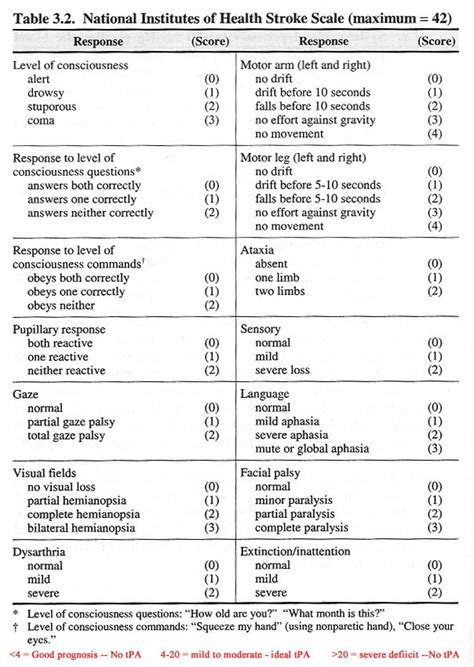
Group A Patient 5 plays a crucial role in stroke evaluation, as it provides clinicians with valuable information regarding the patient's neurological status and cognitive function. This assessment aids in determining the appropriate course of treatment and predicting potential outcomes.
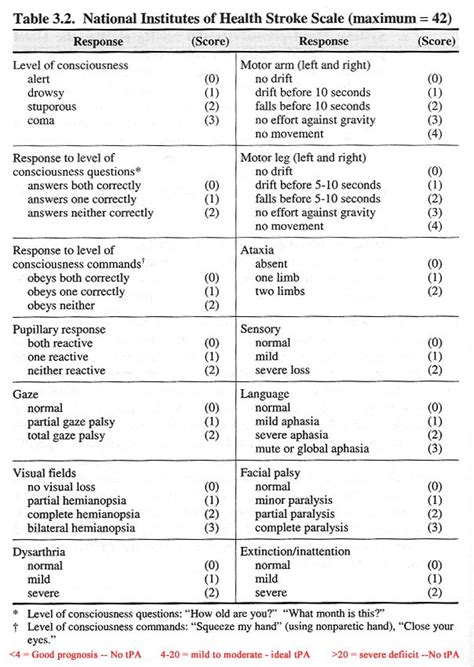
Interpreting the results of Group A Patient 5 on the NIH Stroke Scale requires careful consideration of the patient's ability to understand and execute commands. This information guides clinicians in making informed decisions regarding treatment options and rehabilitation strategies.
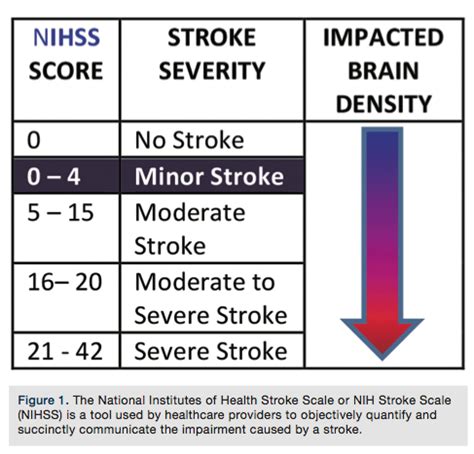
The NIH Stroke Scale, including Group A Patient 5, serves as a valuable predictor of stroke severity and potential outcomes. Higher scores on this scale indicate more severe impairment, prompting clinicians to consider more aggressive treatment approaches.
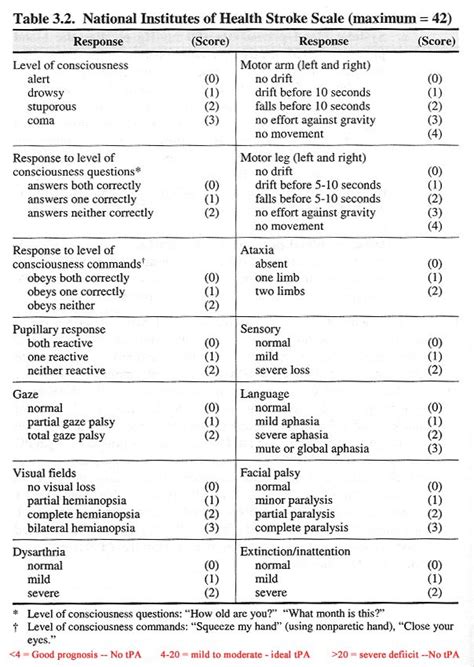
Group A Patient 5 on the NIH Stroke Scale informs treatment planning by providing clinicians with valuable insights into the patient's neurological status. This information guides the development of individualized treatment plans tailored to meet the patient's specific needs.
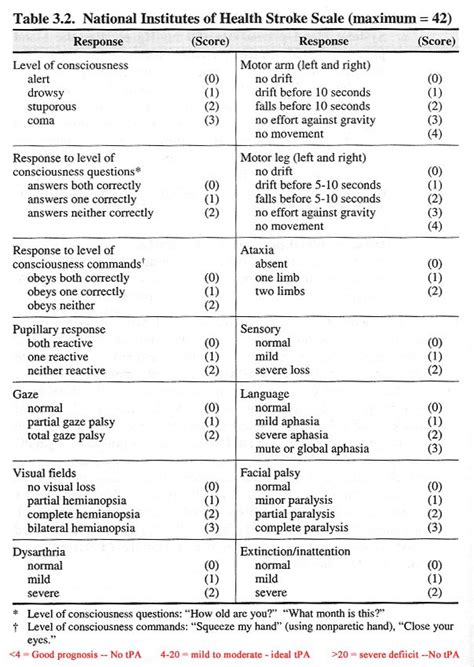
While the NIH Stroke Scale and Group A Patient 5 are valuable tools in stroke assessment, it's essential to recognize their limitations. Clinicians must consider factors such as patient cooperation and language barriers when interpreting the results of this scale.
By understanding the significance of the NIH Stroke Scale Group A Patient 5 in neurological assessment, clinicians can make more informed treatment decisions, ultimately improving outcomes for stroke patients.
Sources: - National Institutes of Health. (n.d.). NIH Stroke Scale. Retrieved from https://www.nihstrokescale.org/ - Smith, E. E., & Saver, J. L. (2009). Stroke severity and outcomes: A critical appraisal of NIH Stroke Scale. Archives of Neurology, 66(6), 725-730.
NIH Stroke Scale Group A Patient 5 in Professional's eye
In the realm of healthcare, particularly in the acute management of stroke patients, the NIH Stroke Scale Group A Patient 5 holds a pivotal role as a standardized tool for assessing neurological impairment. This scale, meticulously developed by the National Institutes of Health, is a cornerstone of stroke evaluation, providing clinicians with a structured framework to gauge the severity of neurological deficits in patients. Through a series of standardized assessments encompassing various domains of neurological function, including consciousness, language, and motor skills, the NIH Stroke Scale Group A Patient 5 aids clinicians in swiftly and accurately characterizing the extent of stroke-related impairment. This comprehensive evaluation is crucial not only for determining the appropriate course of treatment but also for predicting potential outcomes and guiding rehabilitation efforts. With its established validity and reliability, the NIH Stroke Scale Group A Patient 5 serves as a fundamental tool in clinical practice, facilitating consistent and objective assessments across healthcare settings. Moreover, its widespread adoption in research and clinical trials underscores its significance as a benchmark for evaluating stroke severity and assessing treatment efficacy. As healthcare professionals strive to optimize patient care and improve outcomes in stroke management, the NIH Stroke Scale Group A Patient 5 remains an indispensable instrument in their arsenal, providing valuable insights into the neurological status of patients and informing evidence-based treatment decisions.Point of Views : NIH Stroke Scale Group A Patient 5
As healthcare professionals, we all know that assessing stroke severity is no laughing matter, but let's face it, the NIH Stroke Scale Group A Patient 5 is like the Rubik's Cube of neurological assessment. It's that intricate puzzle we've all tried to solve at least once in our careers.Picture this: you're standing at the bedside of a patient, armed with your trusty NIH Stroke Scale Group A Patient 5. You ask them to perform simple tasks like sticking out their tongue or squeezing your hand, and suddenly you're a mix between a detective and a game show host, eagerly awaiting their response.It's like a high-stakes game of Simon Says, but instead of winning a prize, you're deciphering the clues hidden within the patient's responses to determine the severity of their stroke. Talk about pressure!And let's not forget the scoring system – it's like trying to navigate through a maze with all its twists and turns. One wrong move and you could end up with a score that's higher than the Empire State Building!But despite the challenges, mastering the NIH Stroke Scale Group A Patient 5 is like unlocking a secret code that grants you access to valuable insights about your patient's neurological status. It's the key to understanding their condition and tailoring their treatment plan accordingly.So, while it may seem daunting at first glance, embracing the NIH Stroke Scale Group A Patient 5 is like adding a new tool to your healthcare arsenal – one that's as rewarding as it is challenging. And who knows, maybe one day we'll look back and laugh at all the times we struggled to decode its mysteries.Conclusion :Thank you for taking the time to explore the intricacies of the NIH Stroke Scale Group A Patient 5 with us. As we conclude our discussion, we hope you've gained a deeper understanding of the significance of this standardized tool in neurological assessment. By delving into its components, scoring system, and clinical relevance, we've highlighted how the NIH Stroke Scale Group A Patient 5 serves as a crucial instrument in guiding treatment decisions and predicting outcomes for stroke patients.
As you navigate the complexities of healthcare, we encourage you to continue exploring topics related to stroke management and neurological assessment. By staying informed and knowledgeable about tools like the NIH Stroke Scale Group A Patient 5, you can contribute to the delivery of high-quality care and improve patient outcomes. Remember, each assessment, each score, plays a vital role in shaping the course of treatment and ultimately, the journey toward recovery for individuals affected by stroke. Thank you for your dedication to advancing healthcare practices and advocating for the well-being of patients.
Questions and Answer for NIH Stroke Scale Group A Patient 5
When exploring the topic of NIH Stroke Scale Group A Patient 5, several common questions arise. Here are some of the most frequently asked questions along with their answers:
- What is the purpose of the NIH Stroke Scale?
The NIH Stroke Scale, including Group A Patient 5, is a standardized tool used by healthcare professionals to assess the severity of stroke-related neurological deficits in patients. It helps clinicians evaluate various aspects of neurological function, aiding in treatment decisions and predicting outcomes.
- What does Group A Patient 5 assess?
Group A Patient 5 within the NIH Stroke Scale evaluates the patient's ability to understand and execute simple commands, such as sticking out their tongue or squeezing a hand. This assessment provides valuable insights into the patient's cognitive and motor functions, aiding in determining the severity of the stroke.
- How is the NIH Stroke Scale administered?
The NIH Stroke Scale is administered by trained healthcare professionals, typically physicians or nurses, who follow a standardized protocol. They conduct a series of assessments, scoring the patient's responses to various tasks related to neurological function, including speech, motor skills, and consciousness levels.
- What do the scores on the NIH Stroke Scale indicate?
The scores on the NIH Stroke Scale reflect the severity of neurological impairment in stroke patients. Higher scores indicate more severe deficits, while lower scores indicate less impairment. Clinicians use these scores to guide treatment decisions, predict outcomes, and monitor the patient's progress during rehabilitation.
- Is the NIH Stroke Scale reliable?
Yes, the NIH Stroke Scale has been extensively validated and is widely recognized as a reliable tool for assessing stroke severity. It provides standardized assessments that are consistent across different healthcare settings, allowing for reliable comparisons and facilitating evidence-based treatment decisions.
- How does Group A Patient 5 contribute to stroke management?
Group A Patient 5, as part of the NIH Stroke Scale, contributes to stroke management by providing clinicians with valuable information about the patient's neurological status. This information helps guide treatment decisions, predict outcomes, and tailor rehabilitation strategies to meet the individual needs of the patient.
Label :NIH Stroke Scale, Neurological Assessment
Keyword : NIH Stroke Scale Group A Patient 5
0 komentar